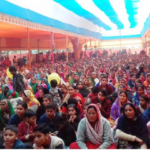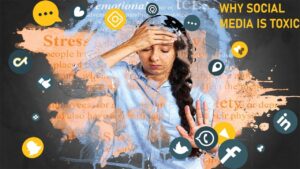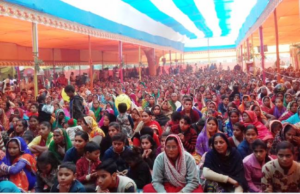
Writer- Minakshi Sehrawat
How does the world see India? At a glance, they perceive us as a country that is the biggest democracy, culturally diverse, embracing multiple identities and of course, the second-most populous country of the world. In terms of education, we are a country with the largest number of academic institutions in the world and comes second largest in terms of student numbers. Nevertheless, we are yet to harness the progressive growth in improving the standards of education in India.
Old Model-College first, job later-
The major reason why Indian values and pursue education is ‘to get a job’ to secure the future. This path always appears as a linear, one-way road- that is first go to college and then go to a job. There are diversions in comparatively lesser ratios wherein students go to a job first and then earn a degree along with a job. Some of the converging forces like the unsustainable hike in college fees, negative relationship between industry readiness of college graduates, the unparalleled flow of demands of industry and curriculum updates in universities, talent attraction and development strategies adopted by the next generation recruiters, etc. are the underlying reasons for it. Suppose you ask any parents about the reason for them to send their children to go to school, perhaps the majority would point that a degree will fetch them more chances to earn well. Regardless of education, caste, race, and political affiliation, parents would consider the degree as a pathway to prepare their children for achieving ultimate success in their life.
This trend in the long term can break the linear -one-way road- and reverse the trend. Which may be to get a job first and degree either parallel or later. This will be further driven by the dissatisfaction of work-relevance and work readiness of graduates, sheer intimidation of education cost. However, they also value the ‘college’ system for other aspects like social development, mental progression, critical thinking, etc. But these factors can not have a monopoly as the reason for students to go the colleges. Meanwhile, many of the institutions at the same time have failed to deliver effective social development, value-driven individuals, and thinking adults. Also, some of the common behaviors associated with college life, such as ‘hook-up’ culture, binge drinking, poor sleeping, and eating habits are seen more as a troubling vacation as opposed to preparation for the real world. Taken altogether, these challenges are breaking the notion of college life as a path of personal and professional growth.
New Model- Job first, college included
All the above signs point towards some important tweaking of the established system and pave way for direct student-employee equation which proposes for ‘job first, college included’ model. The students should be categorized into categories like- ambitious, less cognisant, college hesitant, debt-averse, etc. Based on the preferences and choices of them and their families they should get the perfect fit options for themselves. Additionally, the voice of the teaching community should also have the right resonance in the system. It will help students to underline their interests and shape them in the right direction without leaving any scope for confusion. Further, options like affordable schooling, applied learning should be available.
Key elements of this formula include right mentoring, coaching, real-world integrated teaching and training, working with dynamic teams in diverse settings, learning to survive failure, developing cultural sensitivity and understanding the fault lines of gender imbalances at the college level. Much of such developments can be rightly accomplished effectively for 18-24 old students. Also, working students can certainly get this with opportunities- with good managers and colleagues- at their workplaces. Yes, for that the later will require to innovate with their hiring and talent management models. Nevertheless, a strong partnership will be required by higher education institutions with employers.
Educational institutions can tie-up with some of the big employers to offer college degrees as employee benefits to attract talent and up-skill their existing workforce also. From one degree to another this will help make studies more affordable for more people. At the same time, it will lower or remove the risk of loan debt and increasing college enrolments. Plus, it will bridge the career readiness gap which many fresh graduates badly encounter.
Altogether, it is not to suggest to remove the traditional college experience. Because the full-time students will continue to appeal to a sizable segment of the market. However, the ‘job first, college included’ model will allow the parents and students with financial bottlenecks to earn their college credentials at a lower cost and open a new route of learning for themselves. This fresh approach would be widely appreciated by the parents of ‘would-be’ college students.






More Stories
Is Social Media Entertainment r A Dose of Poison?
How are shrines and mosques growing in the lap of the Himalayas.
Kolkata case: Is the culprit around you?